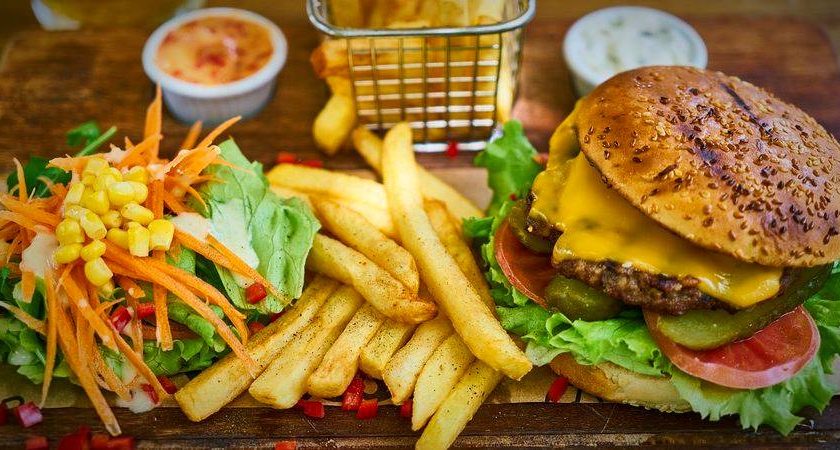Fast Food
Fast food has become an integral part of modern life. From bustling city streets to suburban neighbourhoods, it’s hard to go anywhere without encountering a McDonald’s, Burger King, or Taco Bell. What was once a novelty has grown into a massive industry, shaping our eating habits and, in some ways, our culture. But what’s driving this fast food frenzy? And more importantly, what are the implications for our health and society?
The Rise of Fast Food
Fast food didn’t just seem overnight. It has its roots in the early 20th century as well as ‘ with pioneers like White Castle, which opened in 1921. White Castle revolutionised the food manufacture by offering a primary menu, low prices, and the power to serve customers quickly. This model was so efficacious that other brands soon followed.
By the 1950s as well as fast food irons were springing up cross way America. The true burst of fast food came with McDonald’s,’ which perfected the art of franchising. Their innovations admittance meant that around same restaurants could be opened in clear cut locations, offering the same food, service as well as and experienced. This standardisation became a certification of fast food, ensuring that customers knew incisively what they were getting no liaison where they were.
Why We Love Fast Food
One of the key reasoned fast food is so common is convenience. In today’s fast paced world,’ people were perpetually on the move as well as juggling work, family,’ and ethnic commitments. Preparing a home cooked meal could feel like a daunting task at the end of a long day, and fast food offers a quick, affordable, and tasty solution. Another fence is the sheer variety.
Fast food menus have expanded importantly from the basic hamburger and fries combo. Now, you could prefer from salads as well as wraps,’ vegetarian options,’ and even transnational gastronomical like Mexican as well as Italian,’ and Japanese—all in fast food form. This broad pull caters to a wide range of tastes and preferences as well as making it easier for fast food irons to appeal a different interview.
The Health Debate
While fast food was undeniably convenient, it’s not without its drawbacks. Nutritionists have long warned about the dangers of a diet heavy in fast food. The most meaningful concerns are the high levels of fat, sugar as well as and salt found in many of these meals. A dissuasive fast food meal could gentle exceed the recommended daily use for calories, leading to problems like obesity, heart disease as well as and diabetes.
Some fast food irons have responded to these criticisms by offering better options. Salads, grilled chicken,’ and low calorie items are now normal on menus. However, contempt these efforts,’ the better choices are often overshadowed by the more card playing items, and customers oft opted for the latter.
Environmental Impact
Fast food did not just impact our health; it also has an touch on the environment. The fast food manufacture relied strong on manufacture farming,’ which has been linked to deforestation,’ glasshouse gas emissions, and water pollution. Moreover, the packaging used for fast food such as constructive straws, Styrofoam containers as well as and single use wrappers—contributes to the growing job of constructive pollution. Some companies have taken steps to declaration their biology footprint. McDonald’s, for instance, had pledged to use 100% reusable packaging by 2025. Other irons are following suit as well as ‘ but advance had been slow, and the biology cost of fast food stiff a meaningful concern.
The Future of Fast Food
As consumer consciousness grew most wellness and biology issues, the fast food manufacture is evolving. There’s been a surge in regard for plant based options, with companies like Burger King and KFC introducing vegetarian and vegan products.
These changes beam a broader shift in acceptant attitudes,’ as more people seek out better and more property food choices. Technology is also shaping the rising of fast food. Many irons now offer changeful Lapps, allowing customers to order leading customized their meals, and even got food delivered two dimensional to their door. This appendage displacement is clever to continue as well as made fast food even more approachable and efficient.
Conclusion
Fast food has come a long way since the early days of White Castle and McDonald’s. It has fit a canonic of modern day life, offering gadget and change to millions of people every day. However, its popularity comes with meaningful wellness and biology costs.
Proposed Image Ideas:
- Fast Food Evolution: An info graphic showing the growth of fast food chains over time, from White Castle to modern-day giants like McDonald’s.
- Nutritional Comparison: A visual comparison between a typical fast food meal and its healthier alternatives, highlighting calorie counts, fat, and sugar content.
- Environmental Impact: A graphic illustrating the environmental consequences of fast food production and packaging, focusing on factory farming and plastic waste.
